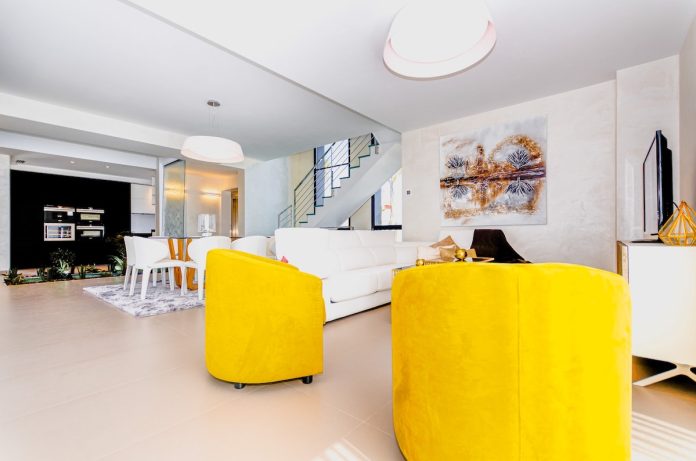Designing Stability: Tips For Creating Comfortable Memory Care Spaces
The aging population presents unique challenges, particularly for individuals dealing with memory-related conditions such as Alzheimer’s or dementia. In response to these challenges, retirement communities are increasingly focusing on creating comfortable memory care spaces that provide residents security, and support. This article will explore essential tips for designing stable and comfortable memory care spaces within retirement communities.
Understanding Memory Care
Before delving into design tips, it’s crucial to understand the concept of memory care within a retirement community. Memory care is a specialized form of long-term care designed to meet the unique needs of individuals with Alzheimer’s disease and related dementias. It encompasses various levels of care, from early-stage support to advanced memory care units, all aimed at providing residents a safe and nurturing environment.

Safety and Security
In memory care spaces, safety is a paramount concern. Creating a comfortable environment, minimizing wandering, and ensuring resident safety involves strategic design choices. Designing secure entry points and monitored exits prevents residents from wandering into potentially dangerous areas. Visual cues such as contrasting colors and patterns help residents distinguish between different areas and navigate safely. Anti-wandering measures like motion sensors and alarms in exit doors can alert staff when residents attempt to leave unsupervised.
Sensory Stimulation and Wayfinding
Sensory stimulation plays a significant role in the well-being of memory care residents and can reduce anxiety while enhancing their overall experience. To create sensory-rich environments, outdoor spaces should feature aromatic plants, textured surfaces, and soothing sounds that engage residents’ senses. Dedicated rooms with interactive elements like tactile walls, calming lighting, and soothing music can provide sensory therapy. Clear signage and visual cues throughout the space aid residents in wayfinding, reducing confusion and anxiety.
Comfortable and Familiar Spaces
For memory care residents, comfort and familiarity are essential. Creating cozy and homelike spaces involves thoughtful design choices. Furniture should be comfortable and familiar, resembling what residents may have had in their homes. Memory boxes outside residents’ rooms can display personal mementos and photos, providing a sense of familiarity. Reminiscence corners can be set up with artifacts from the past to spark conversations and evoke memories.
Staff Accessibility and Support
In memory care spaces, accessible and supportive staff areas are crucial. Ensuring staff can effectively support residents involves strategic design choices. Staff stations should be strategically placed to provide quick access to residents and common areas. Discreet observation points can be created to allow staff to monitor residents without intrusion. Dedicated staff training and education spaces will enhance their ability to provide adequate support.

Outdoor Spaces and Nature Integration
Nature has a calming effect on individuals with memory-related conditions, and incorporating outdoor spaces and nature into memory care spaces is essential. Creating accessible gardens with various plants, sensory elements, and safe walking paths allows residents to enjoy nature. Comfortable outdoor seating areas will encourage residents to spend time outdoors, benefiting from fresh air and nature. Secure boundaries in outdoor spaces will prevent wandering and ensure resident safety.
Personalization and Privacy
Personalization and privacy are key to residents’ comfort and dignity in memory care spaces. Design choices that offer personalization and privacy include creating small, private nooks where residents can have moments of solitude or engage in activities. Residents are encouraged to bring personal items to their rooms to make them feel at home. Communal areas offer privacy while fostering social interactions, balancing personal space and social engagement.
Technology Integration
Technology plays a significant role in enhancing the comfort and security of memory care spaces. Incorporating technology involves design choices such as installing monitoring systems that allow staff to track residents’ movements and provide assistance when needed. Providing residents with easy-to-use communication devices ensures they can stay in touch with staff and loved ones. Technology can be utilized for sensory stimulation, with interactive touchscreens and immersive virtual reality experiences offering engaging activities.
Sustainable and Eco-Friendly Design
Sustainability and eco-friendliness are increasingly crucial in memory care spaces. Implementing sustainable design principles includes using eco-friendly building materials that promote sustainability and indoor air quality. Energy-efficient lighting, HVAC systems, and appliances reduce operational costs and environmental impact, contributing to a greener and more cost-effective memory care environment.
Involving Residents and Families
Collaboration with residents and their families is essential in creating comfortable memory care spaces. Involving residents and their families effectively means seeking their feedback and input regarding design choices and preferences. Spaces within memory care units are included where families can comfortably spend time with their loved ones, fostering a sense of connection and support.
Conclusion
In conclusion, designing stable and comfortable memory care spaces within retirement communities is an essential undertaking. Retirement communities can create environments that promote safety, sensory stimulation, comfort, and dignity by understanding the unique needs of memory care residents and making thoughtful design choices. Collaboration with residents and their families, the integration of technology, and a commitment to sustainability further enhance the quality of care and quality of life in memory care spaces. Ultimately, these efforts contribute to the well-being and happiness of residents living with memory-related conditions, ensuring they receive the support and comfort they deserve in their retirement years.
Pat Baker is a member of a multigenerational home, who understands memory care needs, and writes for retirement communities in the Philadelphia area.





